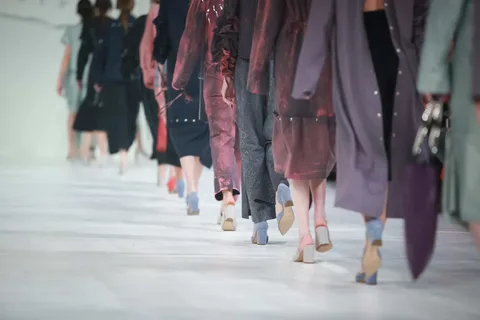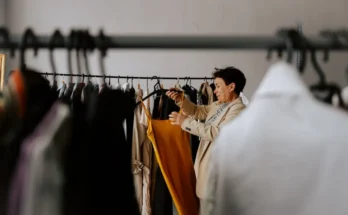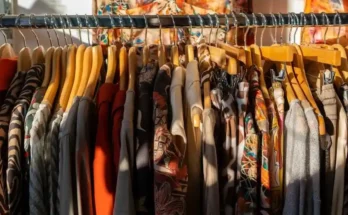Fashion isn’t just fabric stitched together—it’s an unfolding narrative of culture, creativity, and change. From the embroidered robes of ancient dynasties to the minimalist streetwear of today, fashion has always mirrored who we are, who we aspire to be, and where we are going as a society. It’s not only about trends, labels, or runways; it’s about identity, transformation, and the shared visual language that speaks before words do.
The Ever-Changing Face of Fashion:
Every era in fashion history reflects the spirit of its time. The flapper dresses of the 1920s weren’t just about fringe and fun—they symbolized women’s newfound freedom and rebellion against societal norms. Similarly, the sharp tailoring of 1980s power suits represented women entering boardrooms in a male-dominated corporate world. Even the rise of athleisure in the 2010s spoke volumes about shifting priorities, where comfort began to share the stage with style.
Fashion adapts as society evolves. Political movements, economic conditions, art, and even climate influence what we wear. A simple denim jacket can carry traces of rebellion, while a silk scarf might recall timeless elegance. Clothing choices are often silent protests, celebrations, or reflections of the world outside and the world within.
Technology has revolutionized fashion in ways our grandparents could never have imagined. From 3D-printed shoes to AI-powered design tools, tech is not only streamlining production but transforming creativity itself. Designers can now prototype digitally, reducing waste while pushing aesthetic boundaries. Online shopping, once a novelty, is now a norm. Social media platforms, especially Instagram and TikTok, have birthed a new kind of trend cycle—fast, viral, and global. Influencers can dictate what’s “in” before the magazines even go to print, and consumers engage with brands not through billboards, but through stories, reels, and hashtags.
The Dark Side of Fashion:
-
The Toll of Fast Fashion
Not all that glitters is ethically made. The rise of fast fashion brought convenience and affordability, but at a devastating cost. Behind every $5 t-shirt, there often lies a story of underpaid labor, environmental degradation, and disposable culture. Clothes are produced at lightning speed, worn a few times, and tossed into landfills. It’s fashion without conscience—and the world is waking up.
Documentaries, exposés, and consumer activism have exposed the harsh realities of the industry. This reckoning has sparked a powerful counter-movement: the rise of sustainable fashion, ethical sourcing, and conscious consumption.
-
Fashion’s Environmental Footprint
The fashion industry is one of the largest polluters on the planet. From water-intensive cotton farming to chemical dye processes and synthetic fabrics that release microplastics, the environmental impact is immense. Add to that the carbon footprint of shipping clothes around the globe, and the scale becomes clear.
But awareness is the first step toward change. Many brands, both big and small, are now prioritizing eco-friendly practices. Upcycling, biodegradable materials, and transparent supply chains are no longer fringe concepts—they are becoming fashion’s future.
The Rise of Sustainable Style:
-
A Shift Toward Conscious Consumerism
Today’s consumers are no longer satisfied with style alone. They want stories, values, and accountability. They want to know who made their clothes, what materials were used, and what impact their purchase has on the world. This has led to a rise in slow fashion—where quality, longevity, and ethical production are prized over fleeting trends.
People are returning to practices like thrifting, clothing swaps, and capsule wardrobes. Fashion is becoming more intentional. Wearing something well-made and responsibly sourced is a quiet act of rebellion against mass production and mindless waste.
-
Innovation Meets Responsibility
Sustainable fashion isn’t about sacrificing style—it’s about smart design. New technologies are giving rise to innovative fabrics like pineapple leather, mushroom-based textiles, and recycled ocean plastic yarn. Designers are proving that fashion can be futuristic and planet-friendly at the same time.
Even luxury brands, once criticized for excess, are shifting gears. They are introducing resale platforms, take-back programs, and limited production runs to reduce waste and extend the life of their garments.
Fashion’s Digital Frontier:
The latest frontier in fashion isn’t fabric—it’s pixels. Digital fashion is redefining what it means to dress up in an increasingly virtual world. From avatars wearing designer outfits in gaming universes to virtual runway shows, fashion is no longer confined to the physical realm.
This digital evolution opens doors to radical creativity without material waste. Designers can experiment wildly, unbound by gravity, cost, or convention. Consumers, too, can explore identity in new ways, curating looks that exist only online.
Once upon a time, style was dictated by a few fashion houses and editors. Today, anyone with a phone and a sense of style can be a fashion authority. Influencers, vloggers, and digital creators are shaping the tastes of millions. Fashion is no longer top-down—it’s a conversation.
The democratization of style has made fashion more inclusive, more accessible, and more diverse. From body positivity to modest fashion, from plus-size influencers to gender-fluid trendsetters, style is no longer about fitting in—it’s about standing out, unapologetically.
Conclusion:
Fashion is more than just clothes—it’s a language, an art form, a declaration. It tells the story of who we are, what we care about, and where we are going. In a world full of noise, fashion remains a powerful way to be seen, to express, to connect.
As we move forward, fashion’s true value will not lie in price tags or status symbols but in its ability to spark joy, challenge norms, and inspire change. Whether it’s a thrifted jacket, a handmade dress, or a digital garment worn in a virtual world, every choice is a thread in a larger tapestry.
Fashion is freedom. And the runway is wide open.




